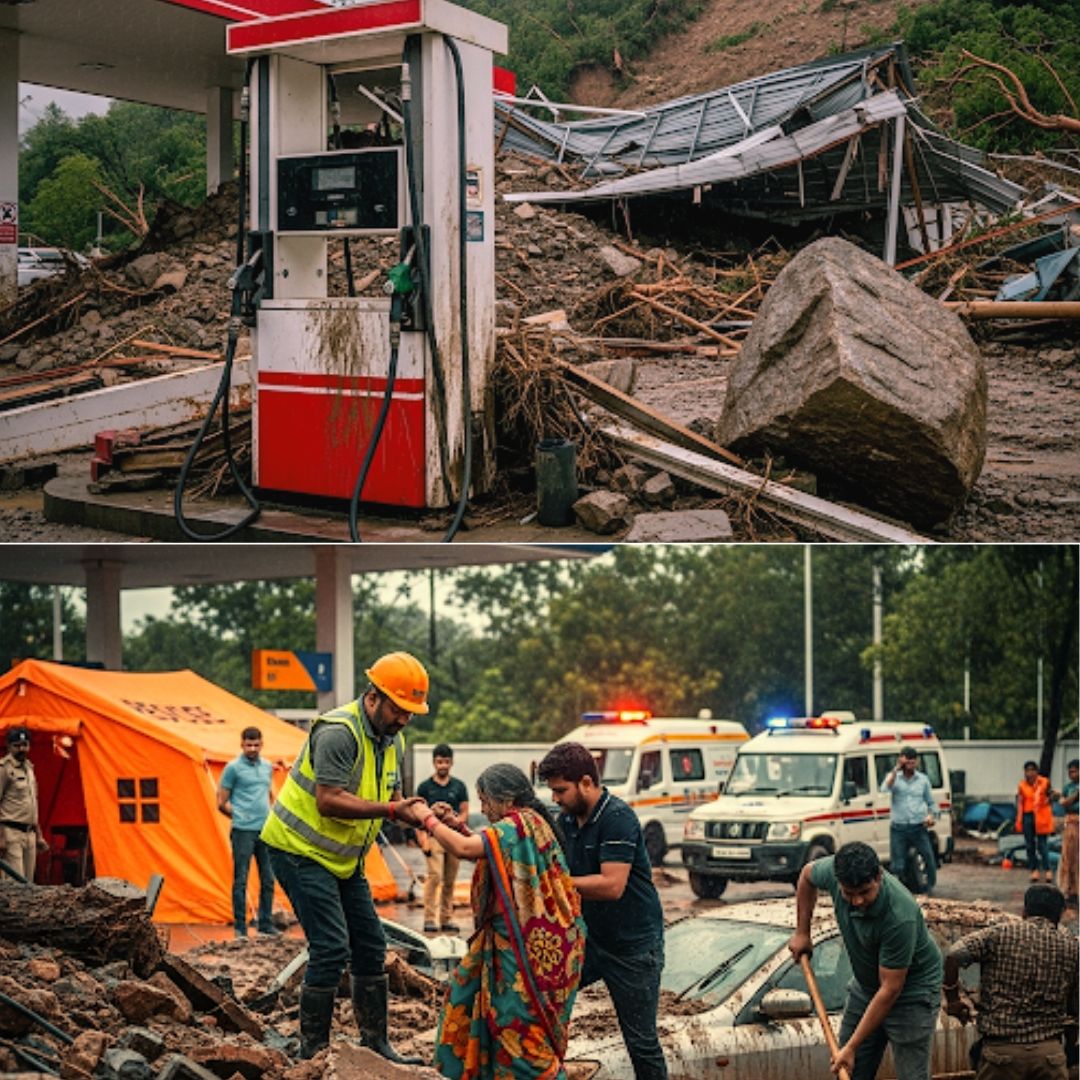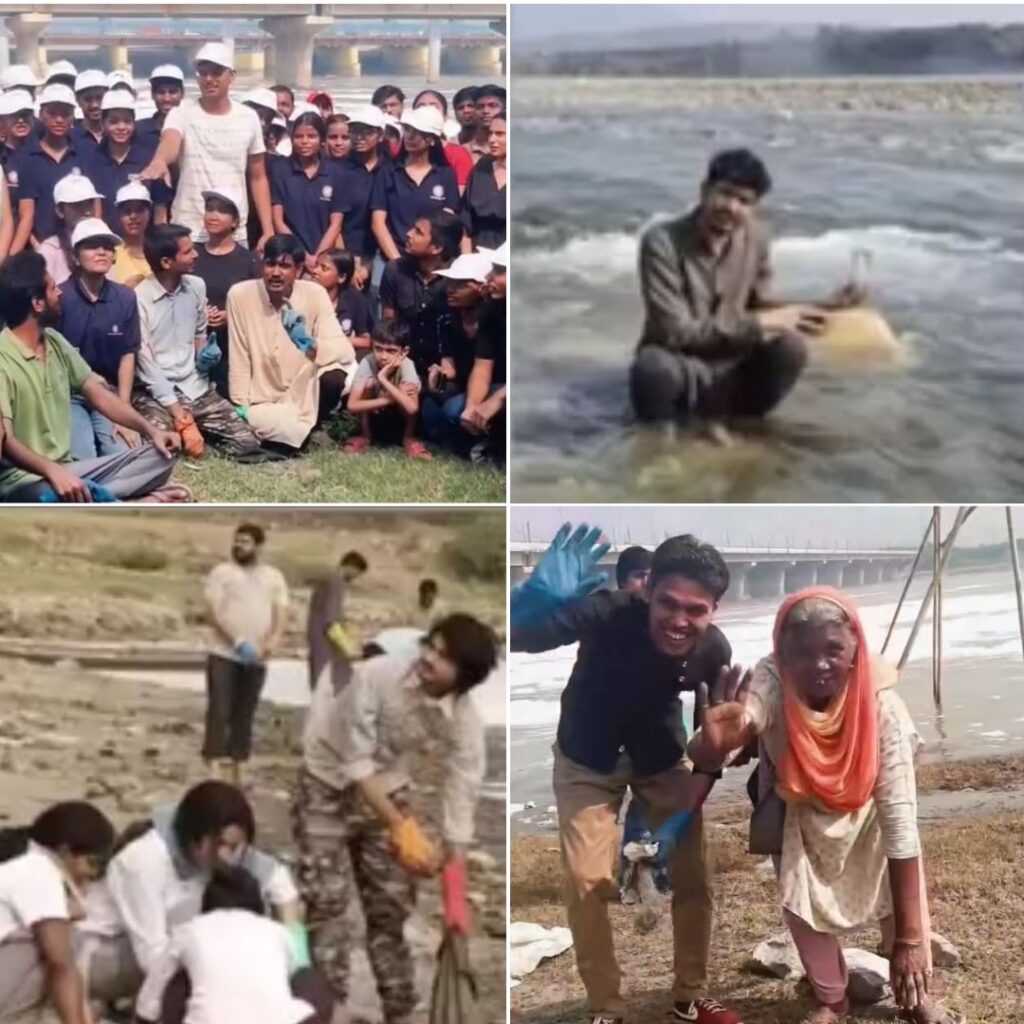On Sunday evening, a massive landslide triggered by persistent heavy rainfall struck the Balli Nullah area near Balinallah on the Jammu-Srinagar National Highway in Udhampur district, Jammu and Kashmir. The landslide brought down a vast amount of debris from the mountain, completely burying a Hindustan Petroleum petrol pump under the rubble.
The incident happened around 6:30 to 7 pm when staff noticed cracks forming in the mountain and quickly evacuated the site, ensuring no casualties occurred. Jai Pal Singh Jamwal, the petrol pump owner, recounted how they preemptively shut down operations, moved equipment and staff to safety, and stopped tanker movements just before the collapse.
Disruptions and Emergency Response Underway
The landslide caused significant damage to the petrol pump infrastructure, leading to service disruptions and concerns about fuel availability in the area.
Fire Officer Sunil confirmed that the fire department responded promptly after receiving the emergency call and monitored the landslide, which continued for some time after the initial collapse. The ongoing heavy rains have not only triggered the landslide at Balinallah but also caused further geological instability in the region.
On Monday, reports emerged of massive boulders blocking Dhar Road in Udhampur’s Dudar Nullah area, affecting traffic flow and stranding vehicles. Locals expressed frustration over repeated road blockages during the monsoon, complicating daily travel and emergency access.
Regional Background and Disaster Management Challenges
Udhampur, along with several other districts in Jammu and Kashmir, lies in a fragile mountainous zone prone to landslides and erosion, especially during the monsoon season. Intense rains combined with deforestation and insufficient land management exacerbate the risk of sudden slope failures, threatening lives, infrastructure, and vital transport routes like the Jammu-Srinagar highway.
This incident follows recent severe weather events such as the Kishtwar cloudburst in mid-August, which caused flash floods and large-scale destruction. The Jammu and Kashmir administration, along with teams from the National Disaster Response Force, State Disaster Response Force, police, CISF, and Indian Army, has been actively engaged in rescue and relief efforts to mitigate the impact of these natural calamities.
Defence Minister Rajnath Singh recently convened a meeting at Raj Bhavan in Jammu with senior officials, including Lieutenant Governor Manoj Sinha, to evaluate flood situations in the region and coordinate disaster response measures. Singh also commended the medical teams caring for victims of the Kishtwar cloudburst, affirming that patients were stable and recovering well.
The Logical Indian’s Perspective
This landslide incident reminds us of the delicate balance between human activities and nature, especially in environmentally sensitive mountain regions. The Logical Indian emphasises the need for sustainable development practices that protect both communities and ecosystems from avoidable disasters.
It is essential that authorities, environmental experts, and local residents work together to adopt effective disaster preparedness, including early warning systems, slope stabilization, and responsible land use. Additionally, embracing empathy and dialogue in policymaking can nurture resilience and harmony between people and their environment.
VIDEO | J&K: Massive landslide hits Udhampur highway; petrol pump damaged.
— Press Trust of India (@PTI_News) August 25, 2025
(Full video available on PTI Videos – https://t.co/n147TvrpG7) pic.twitter.com/eDhtvlOT8v












